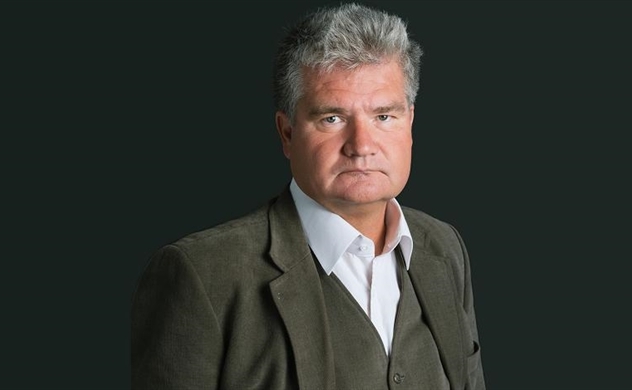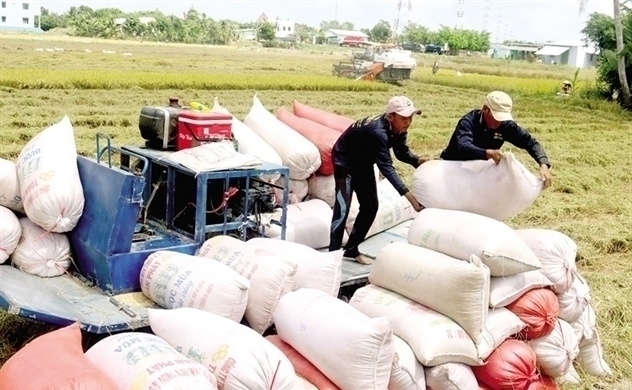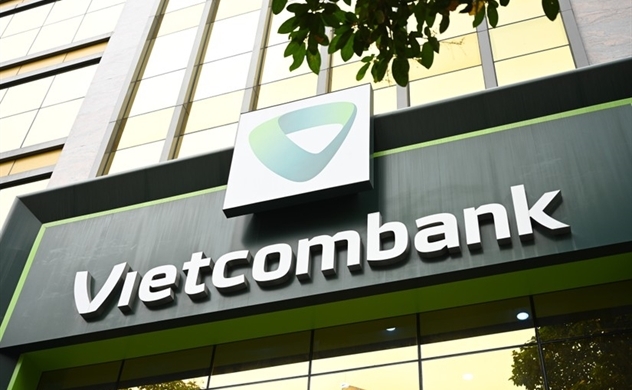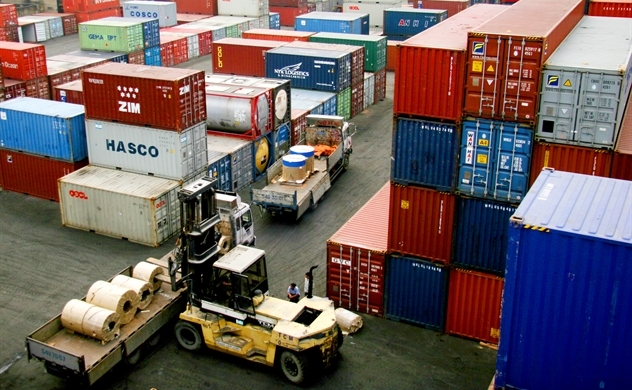Our decision to shift to Vietnam from Thai stock market is right: PYN Elite portfolio manager

Do you miss the Thai stock market or are you happy with your decision to focus on Vietnam?
The so-called “big year” hasn’t come yet for us in Vietnam, but our decision to shift from the Thai stock market to Vietnam in 2013–2014 was nevertheless the right move to make. The Thai stock market reached our target “full valuation” index level of 1,400 points and has subsequently traded close to that level without major volatility. Over the same period of time, the industries in which Vietnamese listed companies operate have seen significant business growth and their shares have performed favorably, even if we’re still waiting for a sharp rise.
Has the surge in prices seen this past autumn pushed Vietnamese stocks too high?
The VN Index is now 9 per cent below its all-time high (1,204 points), which it reached in April 2018. After the spike seen in early 2018, the index corrected which was followed by a prolonged sideways trend, during which the valuation multiples of the companies in the index adjusted to moderate levels helped by earnings growth. After the difficult spring of this year tainted by COVID-19, the VN Index has now found a new strength to perform. During the autumn, the Vietnamese stock market has also shown signs of more sustainable bull market supported by technical analysis by trading above the 50-day moving average.
So the market is not cheap anymore?
The surge seen in the late autumn has pushed the index higher, but listed companies are expected to achieve significant increase in earnings in 2021. This stems from the events that have taken place in 2020: retail shutdowns, consumer caution, air travel restrictions and the sharp decline in oil prices.
We have set our index target at 1,800 points, which we believe is a realistic level. We don’t think this is overly optimistic, taking into account the companies’ earnings growth forecasts, the strong outlook of the Vietnamese economy and the opportunities presented by the modernisation of the stock market. The index target would be achieved with a gain of 80%. If the earnings grow as expected, the stock market’s P/E ratio would be in the range of 15–16 to equal index level of 1,800 points.
Even thereafter, Vietnam’s economic growth will surely support even higher valuations and index levels. The speed at which the expected target valuation levels can be achieved would be slowed down by the recapitalisation of companies, which would dilute their earnings per share, but the pressure on that front is currently moderate, considering that the average D/E (net debt to equity) ratio of the 50 largest listed companies in Vietnam is only 20 per cent.
Tell me more about the enthusiasm among local investors in Vietnam?
Vietnamese investors have opened 270,400 new accounts to invest in equities during the past 11 months. The total number of accounts is now 2.7 million, with more than 300,000 accounts set to be opened this year. Interest in equity investments among local investors is seeing robust growth. The 41,200 new accounts opened in November was the highest monthly figure ever. Of this total, 123 accounts were opened for local institutions and the rest for retail investors.
How has PYN Elite performed relative to the VN Index?
Our returns for the past three years have been weak. Since the all-time high of the Vietnamese stock market seen in April 2018, PYN Elite has generated returns of only 9.0 per cent. This is undoubtedly a disappointment, even if the fund has performed better than the target country’s index, which has declined over the same period.
You used to have quite a lot of holdings in small and mid-cap companies, how about now?
The portfolio’s investments have been reallocated to larger companies over the past couple of years. During the past year, in particular, we have made major changes to the portfolio as we have sought to take advantage of the sudden opportunities in the stock market. Our approach to portfolio management is based on dividing the target companies into core and non-core companies. At present, 89 per cent of our assets have been allocated to twenty core companies. Their shares represent our key potential returns over the next three years.
Banks have gone up nicely, are you planning to cash in on your positions?
We sold our holdings in VIB Bank after the share price increased sharply. The CTG stock has also seen good upward movement this year, but we estimate that it – and other bank shares – still have significant return potential. The sub index of the Vietnamese banking and finance sector is more than two times lower than the general index compared to the all-time high seen in April 2018. This means that the share prices in the sector have declined more sharply than the general index over the past 2.5 years on average.
Banks have generally been poor investments. Their business does not grow and earnings have been weak for a long time now. So why are you so heavily invested in banks?
It’s true that banks haven’t been doing very well from the European perspective. Lending in past ten years has increased by a meagre 3 per cent in Finland and only 15 per cent in Europe. Over the past 10 years, bank earnings have declined by 31 per cent in Finland and 59 per cent in Europe.
Consequently, the returns on shares in the banking sector have also been weak. At the same time, bank lending, deposits and earnings have seen very robust growth in countries such as China, India and Vietnam. Over the past 10 years, Vietnamese banks have increased their loan books by 331 per cent and earnings by 241 per cent. Banks stocks in strong emerging economies could even be classified as growth stocks.
What are your earnings forecasts for banks from here on out?
On the whole, the earnings growth of Vietnamese banks will naturally be more moderate this year due to the pandemic, but we expect an excellent last quarter from the banks thanks to the effective management of the COVID-19 situation in Vietnam. For 2020–2023, our forecast model for the Vietnamese banking sector indicates average annual earnings growth of 18 per cent. This is the average for the sector, with the forecasts for the three large state-owned banks being slightly lower than the average and the figures for medium-sized and small commercial banks being higher than the average (19–20 per cent).
With compounded returns of 18 per cent, an individual bank would double its earnings in just over four years. Lending growth is one of the drivers of earnings growth for banks, with growth in service fees from new services to existing customers being another. For example, we expect CTG to sign a bancassurance agreement at some stage, with the associated commissions for the bank having the potential to reach nearly USD 400 million.
Apart from your holdings in banks, VEA is your largest individual position. Why is that?
VEA is a holding company that owns a significant minority interest in Honda Vietnam (30%), Toyota Vietnam (20%) and Ford Vietnam (25%). Through these three companies, VEA is involved in the Vietnamese motorcycle market – which is the fourth-largest in the world – and the rapidly growing car market. This year, the Vietnamese government supported the manufacture of certain car models, which was not a good match with the production operations of VEA’s factories.
At the same time, the sales momentum of the Vietnamese moped market was weak due to the epidemic. However, in the late autumn, Toyota launched the Toyota Cross car model, which has had very promising sales, and we also expect the moped market to recover next year. VEA’s balance sheet is net cash and its dividend yield exceeds 10 per cent. While we do not expect VEA to deliver tremendous sales growth in the long term, the share price is currently undervalued relative to the company’s excellent balance sheet, dividend payout capacity and the profitability of its business.
Why on earth did you buy an airport operator that is trading at a high P/E?
We knew that the state-owned airport operator ACV is a true blue-chip company. It is quite incredible that ACV will achieve positive earnings this year in spite of the pandemic. Because we were familiar with the company, we were able to make quick decisions when shares became available at the time of the stock market slump in spring 2020. What’s more, we were able to acquire the shares at a discount to the market price at the time. When we added ACV to our portfolio, we expected air travel to return to normal in autumn 2020, but that wasn’t to be.
Nevertheless, we were able to catch the bottom, and the share price has since moved up by about 50 per cent following the recent news about vaccine development. International flights to Vietnam will not resume until 2021, which has naturally been a disappointment, but domestic scheduled flights have already recovered. The future growth potential of the ACV share is driven by several factors.
The Vietnamese administration is currently in the process of transferring airport runways to ACV’s legal control, which will enable ACV’s listing on the main list of the HOSE. Construction has already begun on a new modern airport in Ho Chi Minh City and the work is scheduled to be completed in 2025. ACV’s income from non-aviation sources has been much too low thus far but, going forward, the additional construction and modernisation of restaurant and retail space will substantially increase rental income, with passenger volumes set to grow at the same time.
ACV is currently trading at a valuation of 1/5 compared to its Thai equivalent AOT. The growth in air passenger volume has been faster in Vietnam than in Thailand even before the new HCMC airport project. With this in mind, ACV would support its valuation increasing to a ratio of 1/2 between ACV and AOT.
So, you decided to add POW, a power company, to your portfolio?
We sure did. POW is the largest listed power company in Vietnam. Electricity production is a stable business, although its attractiveness is tempered by the fact that business growth requires heavy front-loaded investments. The electricity generated by POW is bought by the state-owned electricity company EVN. Since 2018, POW and EVN have had a dispute over the currency conversion terms of a significant purchase agreement, which would have affected the purchase price. The share price fell sharply due to the dispute.
We built our POW position at low price levels, and there has been positive news of late regarding the dispute being resolved. POW has had a challenging year in 2020 with the demand for electricity declining and flooding disrupting production operations in the autumn. Nevertheless, the outlook for the next few years is promising. We expect POW to achieve good earnings growth in 2021 as the company moves on from write-downs on receivables recognised due to the dispute to showing normalised earnings and seeing increases in electricity production driven by new natural gas deliveries. POW’s assets are more valuable than its balance sheet suggests. The stock has already started to perform, but it should move closer to a valuation of 1.5X PB.
VHM is a new addition to your portfolio. How does the Vietnamese housing market look like?
Vinhomes is the largest housing developer in Vietnam with a market share of 22 per cent. The company has a very large amount of land bank on its balance sheet for future projects. Its market capitalisation is approximately EUR 10 billion and its D/E ratio is moderate at 38 per cent. VHM’s earnings for 2020 will be slightly under EUR 1 billion. The company’s share price has fallen to a moderate level over the past couple of years due to the slow permit processes for new projects in the Vietnamese housing sector. We see potential for the situation to improve during the next two years, which could see the company’s valuation return close to its past multiples, with the growth outlook being further improved by new projects.
What about MWG? It’s an excellent company, why did you divest your holdings in it?
Over a period of six years, we had generated unrealised gains of more than 500 per cent in MWG, which also represented the largest weight in our portfolio at 18 per cent. MWG has traded at two prices for a long time due to the foreign ownership limit of 49 per cent being full. The MWG share has had a local market price and there has been off market price for trades outside the stock exchange when foreign investors have bought shares in the foreign ownership quota from other foreign investors.
The MWG stocks has been in such high demand that foreign investors have been prepared to pay a 40–50 per cent premium to the local market price. This was also the case when we sold our holdings, which meant we earned a large premium on the shares. The premium pricing is only possible as long as the foreign ownership limits of shares are not eliminated or the situation is not otherwise resolved; for example, by moving all trades to the local stock exchange as transactions for non-voting shares. We acknowledge that Vietnam has desire to move from the MSCI Frontier category to the MSCI Emerging Markets status. This goal has even been publicly stated by the Prime Minister.
Our decision to sell our holdings in MWG was not due to a change in our view of the company’s continued success. The decision was motivated by the risk that the Vietnamese administration will, during the next two years, put forward a feasible plan regarding changes to foreign ownership limitations. The mere information of such a plan would push buyers offering premiums for shares out of the market. We may well add MWG to our portfolio again if the company’s foreign ownership limits are eliminated, making all of its shares available to buy and sell in normal trading.
How has Vietnam fared with managing the COVID-19 crisis?
Let’s start by looking at some numbers. The size of the US population is about 330 million. To date, approximately 279,000 people have died of COVID-19 in the United States. Vietnam’s population is 97 million. The number of COVID-19 deaths is 35. Vietnam is now practically free of COVID-19. The borders are closed and nearly all new infections are found on special flights, with the patients being immediately placed under mandatory quarantine.
There have also been some COVID-19 cases among people who have crossed the border illegally, but the Vietnamese administration has kept these cases under control by taking quick and effective action. A non-democratic state administration can respond to a crisis very effectively, which is a good thing in this case. The quick decisions and actions taken by the Vietnamese administration to prevent infections have saved the lives of countless citizens.
The development of the public health situation has had a massive impact on the economic conditions and near-term economic forecasts. China, Vietnam, Taiwan, South Korea and Indonesia are expected to report slight economic growth in 2020 or at least a growth figure close to zero. These are excellent figures in light of the global economic crisis caused by the pandemic. In Asia, the island states of Fiji and Maldives suffer the most from the collapse of tourism, with their GDP figures set to fall by some twenty per cent this year.
In 2021, China, India and Vietnam, for example, are likely to achieve annual economic growth of well over five per cent. Looking further ahead, it’s important to note that the crisis has led to increased debt for governments as well as businesses in many sectors. This will dampen growth in the future, as debt servicing does not stimulate growth and consumption. In fact, it has the opposite effect. Among Asian countries, China and Vietnam, in particular, were able to maintain economic growth by effectively managing the COVID-19 pandemic. In the post-pandemic world of the next few years, these countries will be in the best position to increase their share of the global economy.
But is the Vietnamese economy still stumbling?
The Vietnamese economy is expected to grow by as much as three per cent this year. The industrial manufacturing index grew by 9.2 per cent in November. The index is currently up 3.1 per cent since the start of the year. I haven’t covered Vietnam’s macroeconomic indicators much in this Q&A because we have written a lot about them in the past. We remain convinced that the Vietnamese economy will grow at an excellent pace for the next 10 years.
- Full report can be found here.
Same category news
-
Huyen Hoang
Latest news
-
Huyen Hoang

 TIẾNG VIỆT
TIẾNG VIỆT 








_291615658.jpg)









